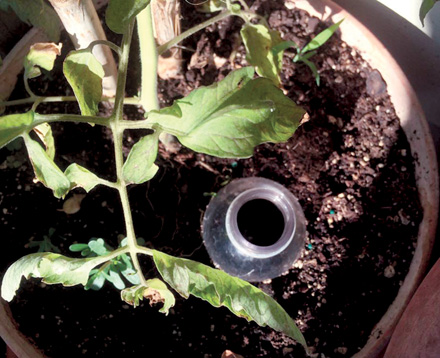11 Best Watering Practices

In addition to stressing people and pets, temperatures over 90F for several consecutive days stresses plants. In those conditions, plants stop making nectar and pollen, eliminating any possibility of flowers and fruit and frustrating gardening friends aspiring to have perfect lawns. Luckily that’s not me. However, as we head into the traditional August dearth, here are 11 watering practices to help plants survive:
1. Water only in the early mornings. Although it’s more comfortable to be outside in the evenings, watering at night can encourage fungus. I have watered at night, especially with sprinklers when my blackberry bushes appeared to be literally burning up but, note to self – don’t make it a habit.
2. Water with an underground wand; best $20 I have spent in a long time. The 2-foot wand inserted into the ground around plants delivers water at root level. If the tops burn up, the living roots may bring the plants back next year. The wand also comes in handy when I want to chase friends off my deck. Just kidding, checking to see if you were paying attention.
3. Plants in pots need water at least twice, maybe three times a day. Again get water into the roots. One way to make sure roots get watered is to add plastic bottles with holes buried in pots.
4. Because we are watering so much more frequently, seriously dilute any fertilizer you add. Fertilizer exposed to roots will burn them. I now only add a pinch to a gallon milk jug full of water and make sure it is well mixed.
5. If you have to choose between new and established plants, water the new ones. New plants haven’t established themselves yet and roots exposed to crisp, dry hot soil will quickly kill them.
6. Use cardboard or newspaper to mulch. I have tried both and they appear to help keep my plant roots shaded from the sun. Then when I water, the cardboard in particular seems to hold splashed water and provide some soil moisture a little longer.
7. Mulch garden beds. Dry leaves, pine needles, straw, bark, cardboard all work well to be a barrier between moist soil and hot sun. You don’t need more than 2-3 inches, the mulch will shade the soil and help hold in moisture. With increased watering of mulch, don’t be surprised if you start seeing mushrooms you have never seen before.
8. If your have tomatoes, peppers and herbs in pots, move them to shade.
9. Vegetables need an average of one inch of water a week. It is better to water deeply 2-3 times a week but monitor the soil moisture level to make sure they are getting enough.
10. If you don’t like putting your fingers in soil to test moisture levels, identify a plant that you can easily monitor for wilting. Once you see leaves droop, water.
11. As you plan your garden for next year, buy natives. They are more conditioned to their native soil and have a higher chance of surviving. Just a reminder, natives also need to be watered in a dearth, maybe not as frequently as non-natives but they still need some soil moisture.
Charlotte Ekker Wiggins is a certified gardener, beekeeper and sometimes cook. Copyright 2016 used with permission, all rights reserved. This material may not be published, broadcast, rewritten or redistributed. Contact Charlotte at chargardens@gmail.com.

PORTAL TO THE ROOTS – Carefully poking holes with a knife on the sides and bottom of a plastic bottle and burying it in a pot helps get water get down to plant roots.

SCORCHED PLANTS MIGHT RECOVER NEXT YEAR – Plants that die because of record hot temperatures may come back next year if roots are kept moist. This blackberry should come back next year as long as I keep the soil around roots moist with mulch and deep watering. (Photos by Charlotte Ekker Wiggins).



Facebook Comments